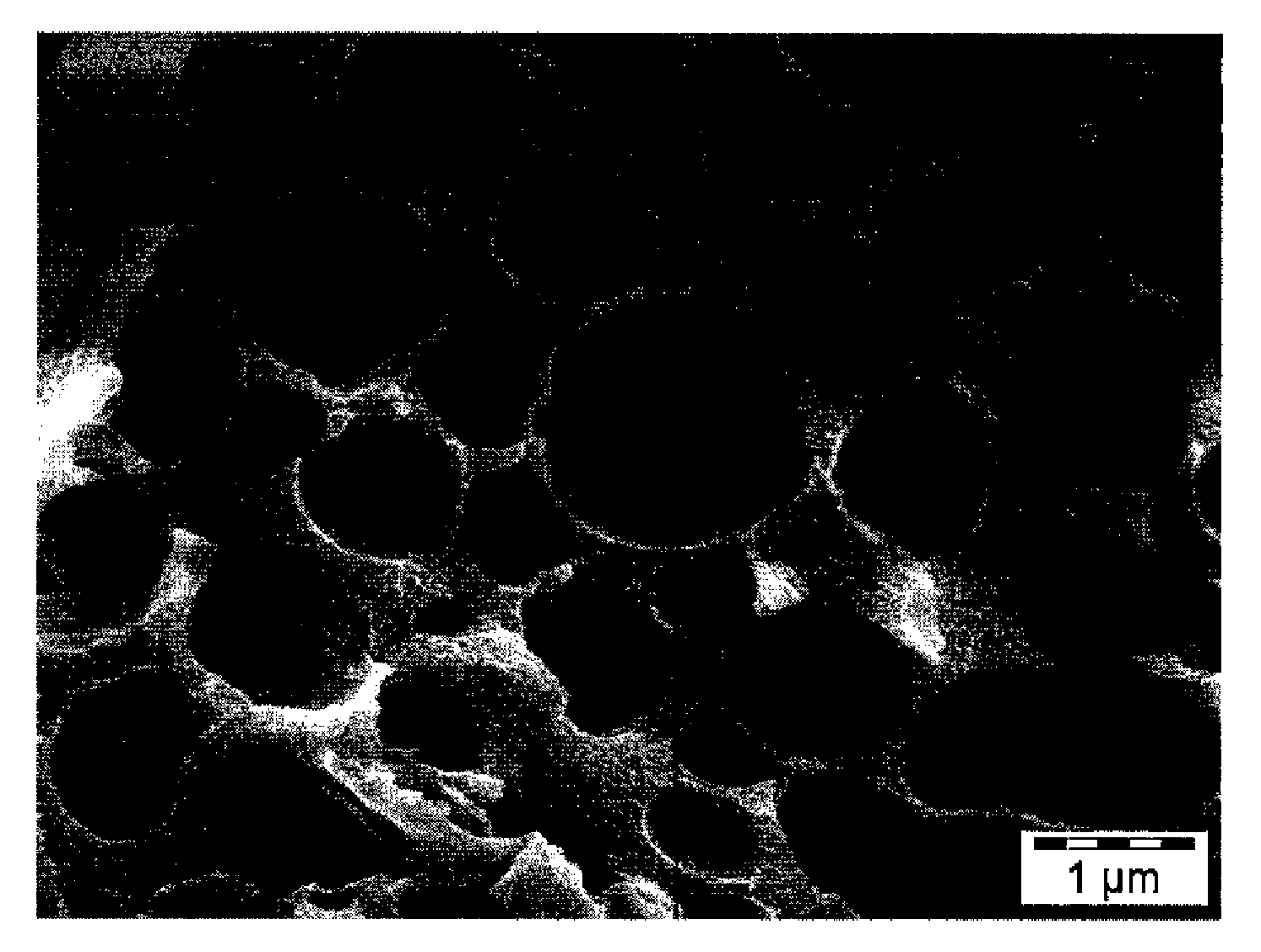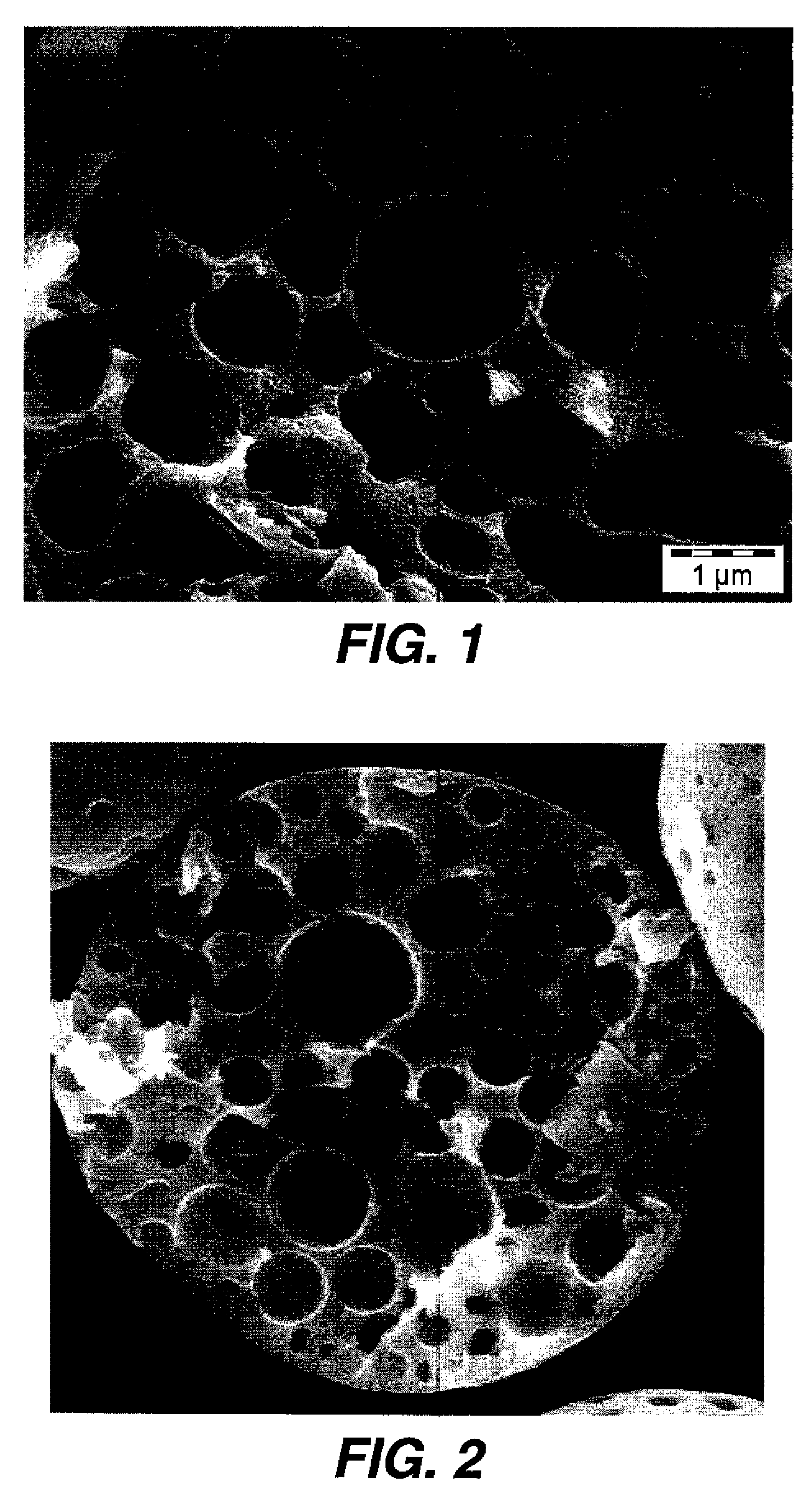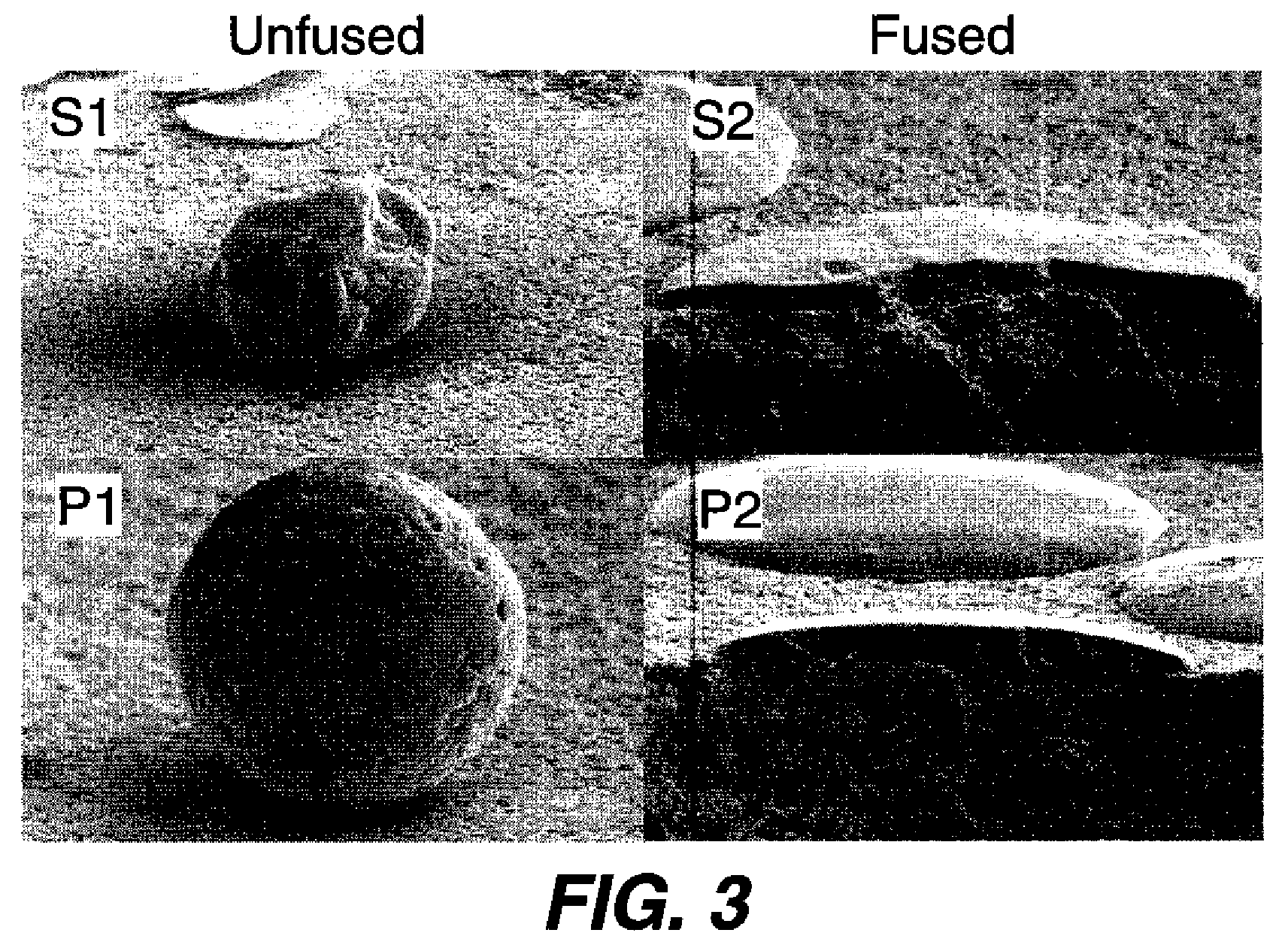Toner porous particles containing hydrocolloids
a technology of hydrocolloids and porous particles, applied in the field of new particles, can solve the problems of low molecular weight, low melt elasticity, and brittleness of binding polymers
- Summary
- Abstract
- Description
- Claims
- Application Information
AI Technical Summary
Benefits of technology
Problems solved by technology
Method used
Image
Examples
example 1
[0064]Preparation of Porous Particles Using CMC
[0065]CMC molecular weight 90K (6.25 grams) was dissolved in 125 grams of distilled water. This was dispersed in 340 grams of ethyl acetate containing 85 grams of the Kao E polymer resin for two minutes at 6800 RPM using a Silverson L4R homogenizer fitted with the General-Purpose Disintegrating Head. The resultant water-in-oil emulsion was further homogenized using a Microfluidizer Model #110T from Microfluidics at a pressure of 8900 psi. A 366 g aliquot of the resultant very fine water-in-oil emulsion was dispersed using the Silverson homogenizer again for two minutes at 2800 RPM, in 900 grams of the second water phase comprising a pH 4 buffer and 4.2 grams of LUDOX TM™, followed by homogenization in a Gaulin colloid mill to form a water-in-oil-in-water double emulsion. The ethyl acetate was evaporated using a Buchi Rotovapor RE120 at 35° C. under reduced pressure. The resulting suspension of beads were filtered using a glass fritted f...
examples 2-4
Control Examples
[0066]In Example 2 a particle was made as described in Example 1 but without CMC in the first water phase. The particles did not have any substantial porosity.
[0067]In Example 3 non-porous solid particles were made by a conventional ELC, chemical process that shows nearly equivalent PSD between the Aerosizer and Coulter. The particle size was 5.1 and the measured porosity was approximately 4 percent. The 4% adjustment required to match distributions is within the uncertainty of the measurements.
[0068]In Example 4 ammonium bicarbonate was used in place of CMC in the first water phase. The resultant porous particle fractured significantly upon isolation as a dry powder.
example 5
Porous Particles Incorporating Pigment
[0069]In this example the particles were prepared as in Example 1 except that CMC molecular weight 80K was used and the organic phase contained 329.94 grams of ethyl acetate, 82.48 g of Kao E polymer resin, and 12.58 g of Lupreton SE 1163. The resultant particles had a porosity of 47% and a volume median particle size of 16.8 microns. After surface treatment with silica as in Example 1 the particle size remained unchanged at 16.8 microns. This demonstrates that the particles did not show any tendency for brittle fracture and that the pigmented particles were porous.
PUM
| Property | Measurement | Unit |
|---|---|---|
| porosity | aaaaa | aaaaa |
| size | aaaaa | aaaaa |
| porosity | aaaaa | aaaaa |
Abstract
Description
Claims
Application Information
 Login to View More
Login to View More - R&D
- Intellectual Property
- Life Sciences
- Materials
- Tech Scout
- Unparalleled Data Quality
- Higher Quality Content
- 60% Fewer Hallucinations
Browse by: Latest US Patents, China's latest patents, Technical Efficacy Thesaurus, Application Domain, Technology Topic, Popular Technical Reports.
© 2025 PatSnap. All rights reserved.Legal|Privacy policy|Modern Slavery Act Transparency Statement|Sitemap|About US| Contact US: help@patsnap.com



